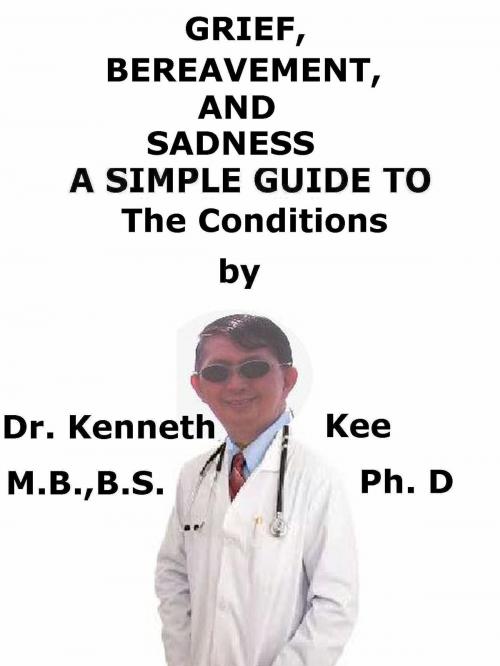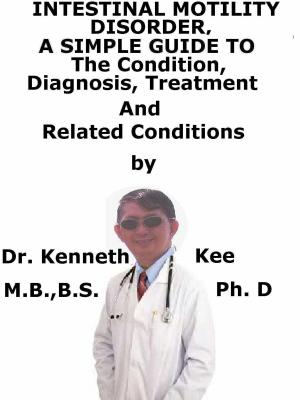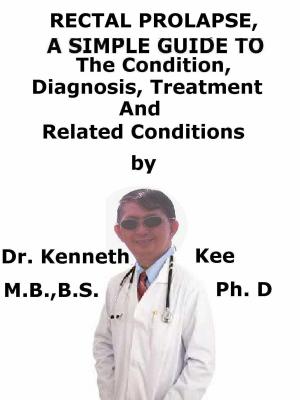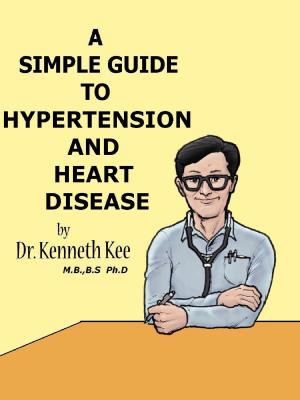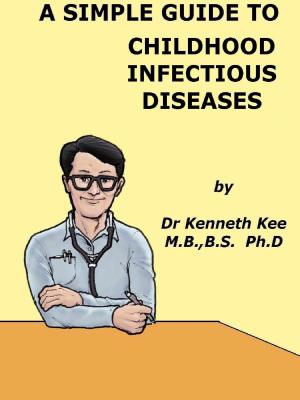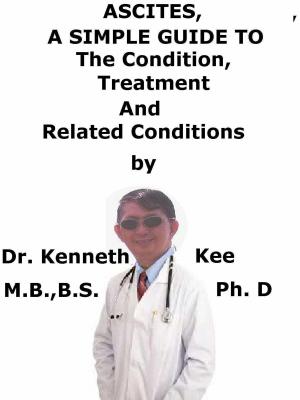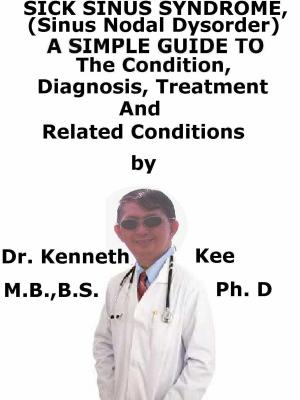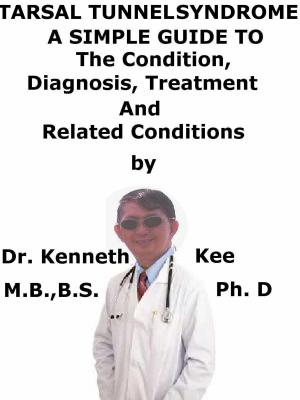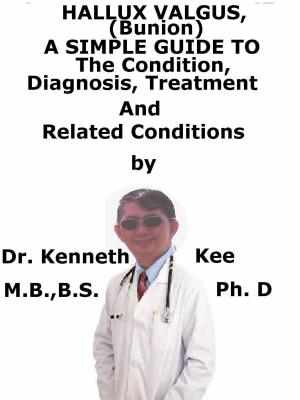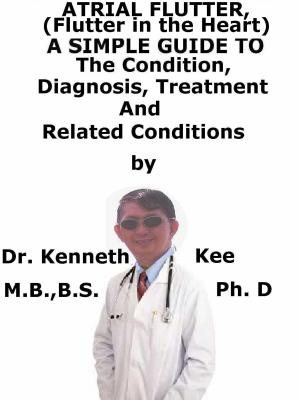Grief, Bereavement, And Sadness A Simple Guide To The Conditions
Nonfiction, Health & Well Being, Psychology, Emotions| Author: | Kenneth Kee | ISBN: | 9780463495230 |
| Publisher: | Kenneth Kee | Publication: | July 9, 2018 |
| Imprint: | Smashwords Edition | Language: | English |
| Author: | Kenneth Kee |
| ISBN: | 9780463495230 |
| Publisher: | Kenneth Kee |
| Publication: | July 9, 2018 |
| Imprint: | Smashwords Edition |
| Language: | English |
This book describes the Grief, Bereavement and Sadness, Treatment and Related Diseases
Grief is a response to the loss of life.
It is a hurt like being stabbed with a knife
The loss of a loved one is so shocking
It can suffocate our breathing
It can cause us to be in denial and depression
It can cause pain in the stomach and indigestion
It can grip the heart and cause chest tightness
There is also muscle weakness and helplessness
Coping with my loss is so difficult
Living after my loss is a struggle
I must acknowledge and accept the death
I touched his dead body in a daze
Why do you have to leave us today?
Your children do not have the urge to play
I have to look after myself and them
Without you nothing will be the same
They say “Lose your spouse you lose your present”
Without you my life is already like a torment
I hope you will be happy where you have gone
I have to accept my fate and carried on
-An original poem by Kenneth Kee
Grief is defined as deep mental anguish such as that arising from bereavement.
Grief is a response to loss particularly the loss of someone or something to which a bond was formed.
Usually focused on the emotional response to loss, it also has physical, cognitive, behavioral, social, and philosophical dimensions.
While these terms are often used interchangeably, bereavement refers to the state of loss and grief is the reaction to loss.
Grief is a loss being related to something that the individual can touch or measure such as losing a spouse through death while other types of loss are abstract and relate to aspects of a person’s social interactions
The stages of mourning are universal and are experienced by people from all walks of life.
There are six stages of normal grief.
Stages of grief
- Shock
Shock is the initial reaction to loss.
This stage normally lasts two or three months.
- Denial
The first reaction to learning of terminal illness or death of a cherished loved one is to deny the reality of the situation.
We block out the words and hide from the facts.
- Anger
As the masking effects of denial and isolation begin to wear, reality and its pain re-emerge.
Anger may be directed at our dying or deceased loved one.
Rationally, we know the person is not to be blamed.
This period may last from six months to a year.
- Bargaining
The normal reaction to feelings of helplessness and vulnerability is often a need to regain control.
This is a weaker line of defense to protect us from the painful reality.
- Depression
Two types of depression are associated with mourning.
The first one is a reaction to practical implications relating to the loss.
Sadness and regret dominate this type of depression.
The second type of depression is more subtle and, in a sense, perhaps more private.
It is our quiet preparation to separate and to bid our loved one farewell.
- Acceptance
Reaching this stage of mourning is a gift not afforded to everyone.
This phase is marked by withdrawal and calm.
Coping with loss is an ultimately a deeply personal and singular experience — nobody can help you go through it more easily or understand all the emotions that you’re going through.
But others can be there for you and help comfort you through this process.
The goal of grieving is not the elimination of all the pain or the memories of the loss.
In this stage, one shows a new interest in daily activities and begins to function normally day to day.
TABLE OF CONTENT
Introduction
Chapter 1 Grief
Chapter 2 Causes of Grief
Chapter 3 Coping with Grief
Chapter 4 Effects of Grief
Chapter 5 Divorce and Marriage Breakdown
Chapter 6 Sadness
Epilogue
This book describes the Grief, Bereavement and Sadness, Treatment and Related Diseases
Grief is a response to the loss of life.
It is a hurt like being stabbed with a knife
The loss of a loved one is so shocking
It can suffocate our breathing
It can cause us to be in denial and depression
It can cause pain in the stomach and indigestion
It can grip the heart and cause chest tightness
There is also muscle weakness and helplessness
Coping with my loss is so difficult
Living after my loss is a struggle
I must acknowledge and accept the death
I touched his dead body in a daze
Why do you have to leave us today?
Your children do not have the urge to play
I have to look after myself and them
Without you nothing will be the same
They say “Lose your spouse you lose your present”
Without you my life is already like a torment
I hope you will be happy where you have gone
I have to accept my fate and carried on
-An original poem by Kenneth Kee
Grief is defined as deep mental anguish such as that arising from bereavement.
Grief is a response to loss particularly the loss of someone or something to which a bond was formed.
Usually focused on the emotional response to loss, it also has physical, cognitive, behavioral, social, and philosophical dimensions.
While these terms are often used interchangeably, bereavement refers to the state of loss and grief is the reaction to loss.
Grief is a loss being related to something that the individual can touch or measure such as losing a spouse through death while other types of loss are abstract and relate to aspects of a person’s social interactions
The stages of mourning are universal and are experienced by people from all walks of life.
There are six stages of normal grief.
Stages of grief
- Shock
Shock is the initial reaction to loss.
This stage normally lasts two or three months.
- Denial
The first reaction to learning of terminal illness or death of a cherished loved one is to deny the reality of the situation.
We block out the words and hide from the facts.
- Anger
As the masking effects of denial and isolation begin to wear, reality and its pain re-emerge.
Anger may be directed at our dying or deceased loved one.
Rationally, we know the person is not to be blamed.
This period may last from six months to a year.
- Bargaining
The normal reaction to feelings of helplessness and vulnerability is often a need to regain control.
This is a weaker line of defense to protect us from the painful reality.
- Depression
Two types of depression are associated with mourning.
The first one is a reaction to practical implications relating to the loss.
Sadness and regret dominate this type of depression.
The second type of depression is more subtle and, in a sense, perhaps more private.
It is our quiet preparation to separate and to bid our loved one farewell.
- Acceptance
Reaching this stage of mourning is a gift not afforded to everyone.
This phase is marked by withdrawal and calm.
Coping with loss is an ultimately a deeply personal and singular experience — nobody can help you go through it more easily or understand all the emotions that you’re going through.
But others can be there for you and help comfort you through this process.
The goal of grieving is not the elimination of all the pain or the memories of the loss.
In this stage, one shows a new interest in daily activities and begins to function normally day to day.
TABLE OF CONTENT
Introduction
Chapter 1 Grief
Chapter 2 Causes of Grief
Chapter 3 Coping with Grief
Chapter 4 Effects of Grief
Chapter 5 Divorce and Marriage Breakdown
Chapter 6 Sadness
Epilogue
